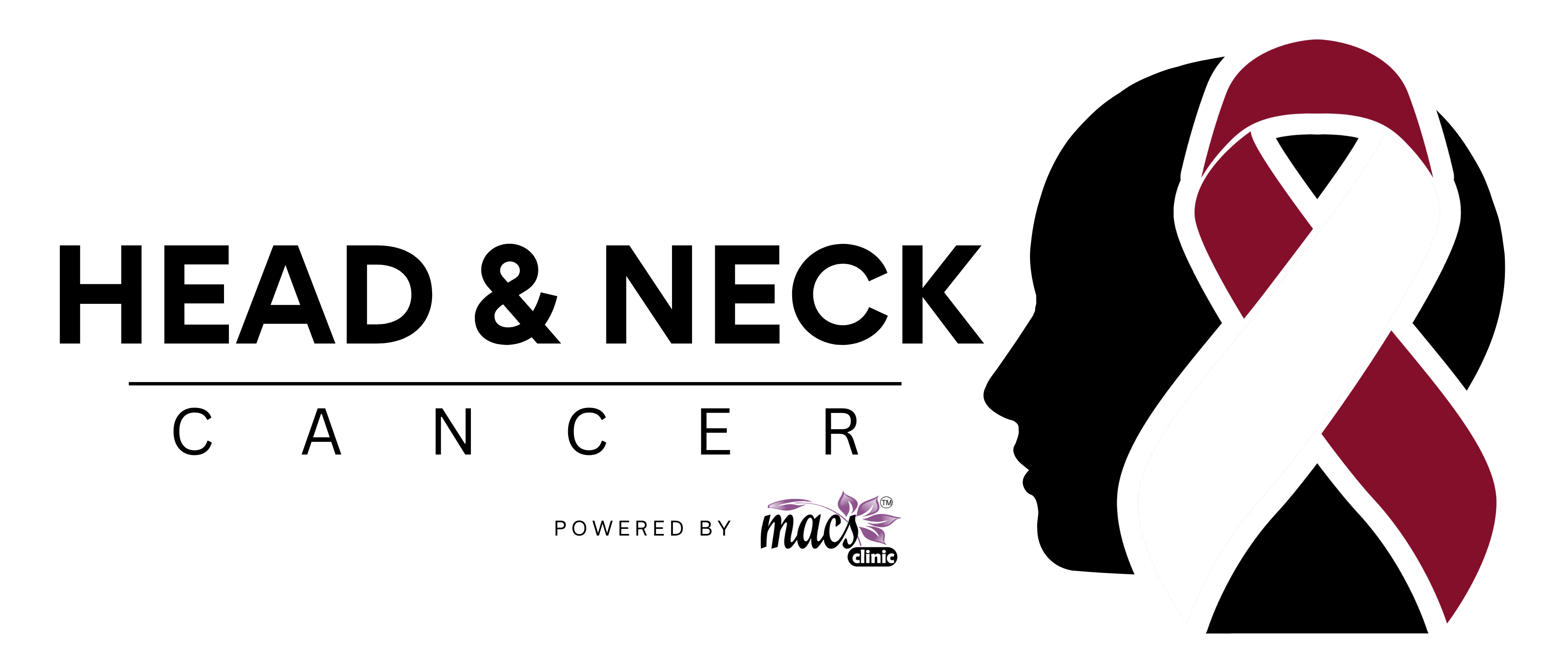Retrosternal or Substernal Goiter: Diagnosis and Treatment
This page provides information on the management of retrosternal/substernal goiter. This complicated condition develops when the thyroid gland extends within the chest. Only a few medical centers worldwide can handle such cases effectively. The page is created under the expert guidance of Dr. Sandeep Nayak from MACS Clinic, Bangalore. He is an experienced thyroid surgeon and surgical oncologist in India. This site is updated regularly with the latest information.
Managing substernal goiter can be challenging when a significant part of the gland is inside the chest. However, in most cases, opening the chest through a sternotomy wound is not required. Instead, surgeons can use Robotic-Assisted Thoracoscopic Surgery (RATS) and the RABIT technique to perform the surgery robotically. Dr. Sandeep Nayak has developed the scarless thyroid surgery, the RABIT technique of robotic thyroidectomy. It is less invasive and offers optimal outcomes with quick substernal goiter surgery recovery time.
Overview of Retrosternal or Substernal Goiter
The thyroid gland is on top of the trachea (windpipe) and oesophagus (food pipe). A goiter refers to an enlarged thyroid gland. It is also known as thyroid goiter. Often, it comprises multiple thyroid nodules, which can be cystic, solid, or a combination of both. Thyroid goiters usually don’t cause pain. But they can cause symptoms due to an increase in their size.
Substernal and retrosternal are interchangeable terms; both refer to “behind the sternum”. In this condition, the thyroid gland enlarges excessively and extends from the neck to the chest. The occurrence of substernal goiters among thyroid goiter patients ranges from 5-15%.
For more information on goiters, click here.
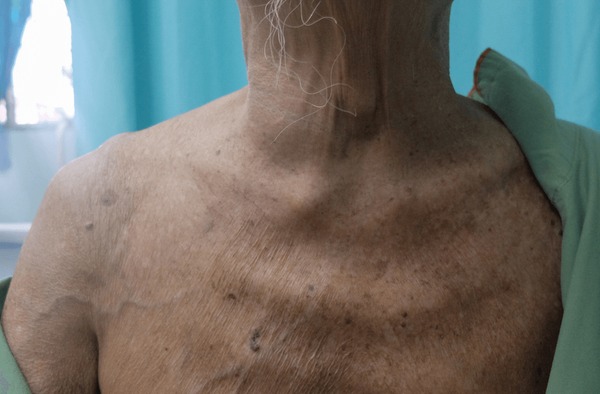
Now, let’s understand the nature and impact of a substernal goiter on your well-being.
What is a Substernal Goiter?
A substernal goiter is an abnormal enlargement of the thyroid gland that extends into the chest cavity. It usually results from a long-standing multinodular goiter.
Often, substernal goiter causes the displacement of the breathing tube, oesophagus, and important blood vessels in the neck and chest. They also have the potential to hide thyroid cancers.
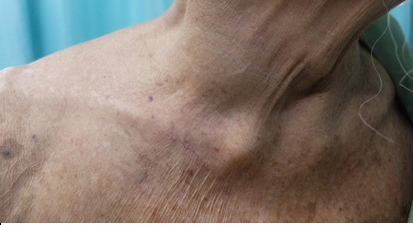
Let’s discuss the signs that may indicate the presence of substernal goiter.
Substernal Goiter Symptoms
The most common symptom of thyroid goiter is a lump or mass in the neck. Substernal goiters grow inward and may not be visible from outside the neck. Symptoms appear late when the goiter presses against the sternum. However, 15-50% of patients remain asymptomatic. Due to their size and location, substernal goiters often cause compression symptoms.
Common symptoms may include:
Feeling of a lump in the throat
Difficulty breathing
cough
wheezing
Noticeable neck mass in extreme cases

Difficulty swallowing and Pemberton’s sign (breathing trouble, stridor, facial flushing in specific positions) may also occur.
In severe cases, voice changes and even vocal cord paralysis can occur.
These symptoms are similar to those of cervical (neck) goiters. However, it could be more severe due to the mass in the chest cavity. Respiratory symptoms are common. However, swallowing difficulty can occur in up to one-third of patients.
Need Assistance ?
Don’t let symptoms go unnoticed. Reach out to experts for prompt evaluation and management.
Now, let’s look at the diagnostic process for identifying substernal goiter.
Substernal Goiter Diagnosis
To evaluate a patient with a substernal goiter, the following tests are required:
Complete medical history and physical examination.
Ultrasound of the neck.
High-resolution CT scan with contrast of the neck and chest.
Thyroid function test.
Laryngoscopy for examining the voice box.
Fine Needle Aspiration Cytology (FNAC).

These tests are important to determine the severity of the condition and the best course of treatment.
Based on the findings, an ultrasound with possible FNAC may be necessary. Generally, a needle biopsy is not required to determine whether surgery is needed.
In cases of large goiters, the possibility of thyroid cancers cannot be ruled out. Therefore, a comprehensive evaluation of neck lymph nodes on all substernal thyroid patients is essential.
Your doctor will recommend needle biopsy only if:
a mass within the thyroid goiter is suspected to be malignant
any abnormal lymph nodes are identified in your neck
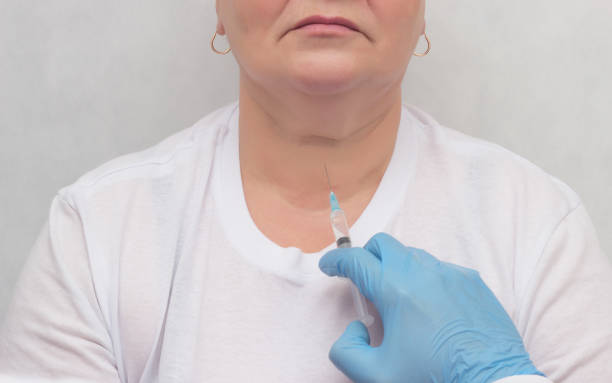
An ultrasound of the entire thyroid gland and neck lymph nodes is necessary to diagnose a substernal goiter. Please note that ultrasound does not expose you to any radiation. It uses sound waves to examine and create images of the neck structures underneath the skin.

Need Assistance ?
Explore comprehensive surgical solutions for substernal goiter treatment. Reach out to us to learn more.
Substernal Goiter: Is a CT scan needed?
A physical examination and ultrasound may not be enough to determine the extent of the substernal goiter. Therefore, a CT scan is necessary to accurately identify the areas where the thyroid goiter extends. This will help the thyroid surgeon plan a safe and effective approach for removing the goiter and sparing other vital structures.
In rare cases, the goiter may be dumbbell-shaped or have portions of the thyroid separated from the main goiter. Only a CT scan can detect this. Without this information, the operation may be incomplete and less effective. Thus, a CT scan is essential for imaging all substernal goiters.
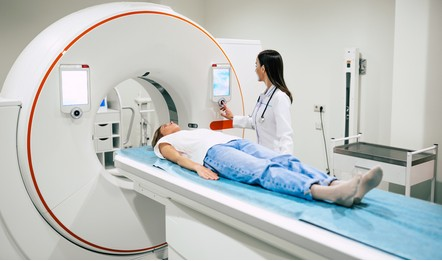
Let’s explore surgical treatment options for addressing substernal goiter.
Surgical Options for Substernal Goiter Treatment
Surgery is an integral part of substernal goiter treatment. Expert thyroid surgeons recommend the removal of the goiter in the following cases:
The goiter is large and visible on the neck.
The goiter is causing symptoms in the breathing or food pipe.
The goiter is producing excessive thyroid hormone (hyperthyroidism).
Thyroid nodules have been identified as indeterminate or suspicious for cancer on FNAC.
Multinodular goiters are causing symptoms.

Despite extending below the sternum and into the chest, the substernal goiter can be removed through robotic surgery with great success.
Dr. Sandeep Nayak and team combine the Robotic Assisted Breast-axillo Insufflated Thyroidectomy (RABIT) and Robotic Assisted Thoracoscopic Surgery (RATS) to perform this surgery. It results in minimal scarring without the need for chest opening (sternotomy).
The conventional approach typically involves a low-collar incision in the lower neck. However, robotic surgery can avoid sternotomy in many cases.
Only seasoned thyroid surgeons should perform this operation. When performed by inexperienced and occasional thyroid surgeons, there is a risk of:
Incomplete removal of the goiter.
Complications in preserving the critical structures of the thyroid gland.
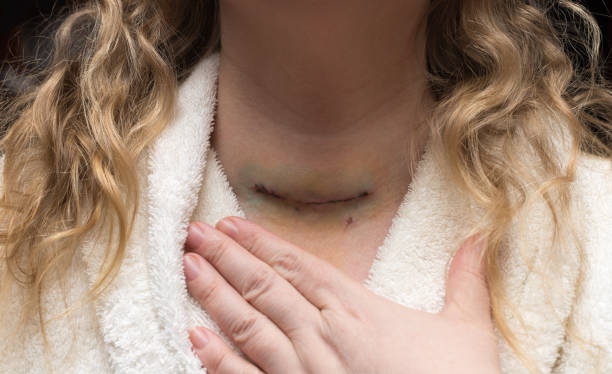
If your surgeon suggests opening your sternum, ensure you have identified a highly experienced thyroid surgeon. Also, seek an expert second opinion. Robotic surgery with RATS and RABIT is almost always sufficient for the surgical management of substernal goiter. And opening the chest is rarely required.
How to Become Our Patient!
Our centre receives many patients from different parts of the world every year. With our vast experience, we have made the treatment process effortless for our patients. You can visit Bangalore for your evaluation, scans, biopsies, and surgery in a single trip.
We understand that follow-ups can be inconvenient for international patients. Therefore, we offer online consultations for your comfort. We also help you with post-op treatment in your country. So, you don’t have to return to Bangalore, India.
Are you interested in becoming our patient? Please click here to know the complete process in detail.

Need Assistance ?
Schedule your first appointment and start your journey towards better thyroid health.
Get answers to common queries about substernal goiter and its management in the FAQs section.
Frequently Asked Questions
Is substernal goiter cancerous?
Substernal goiters can be associated with thyroid cancer. However, the majority (approximately 90%) are non-cancerous.
Can substernal goiter be managed without surgery?
In some cases, medication or radioactive iodine therapy may effectively manage substernal goiter without the need for surgery.
How long does it take to recover from substernal goiter surgery?
The substernal goiter surgery recovery time varies. It depends on the individual and the extent of the surgery. But it typically ranges from a few weeks to several months.
Are there any dietary restrictions for substernal goiter patients?
There are no specific dietary restrictions. Yet, maintaining a balanced diet rich in iodine is essential. Avoiding excessive intake of goitrogenic foods is also beneficial. These include eggs, broccoli, cauliflower, tea, red wine, soy products, peanuts.
Can substernal goiter recur after surgery?
Recurrence of substernal goiter after surgery is possible. But, it is uncommon, especially with thorough thyroid gland removal.
